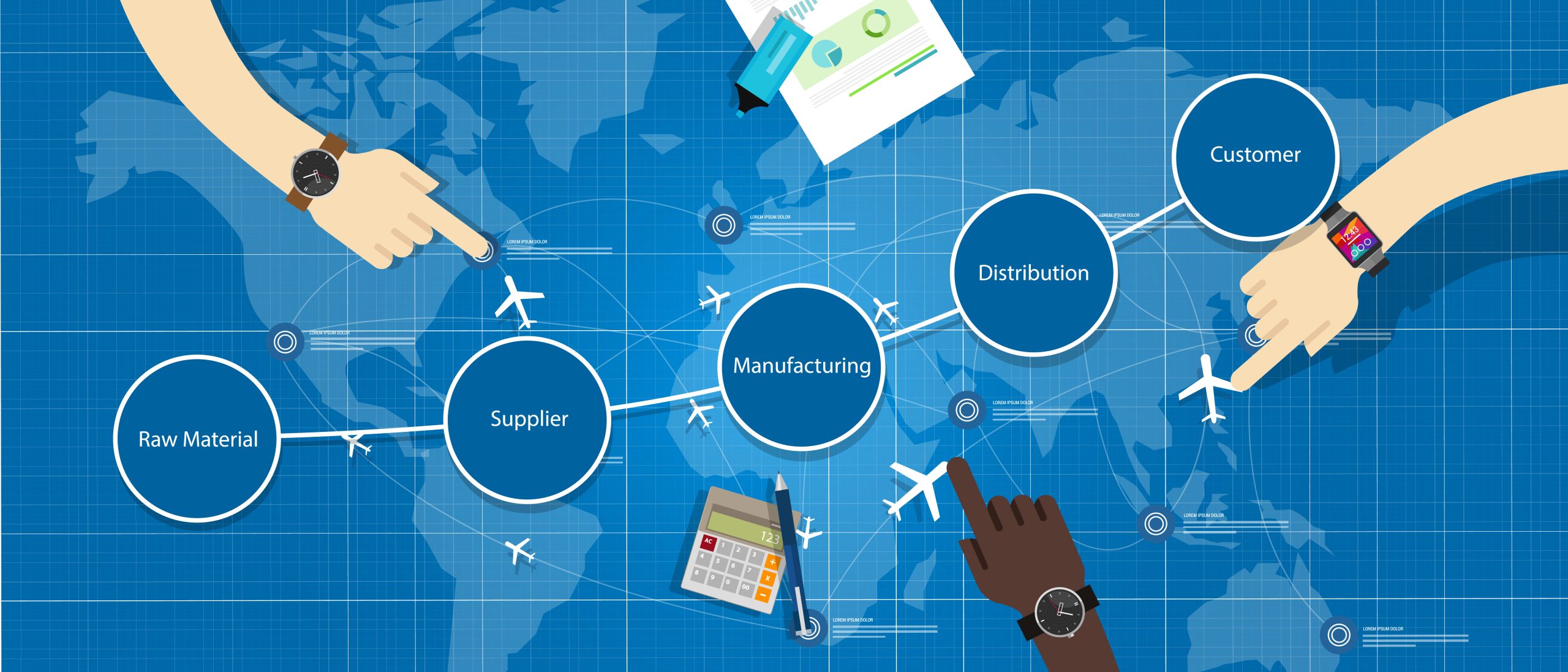In a recent Politico report, critics blasted the U.S. Food and Drug Administration (FDA) for chronic failures, including instances of contaminated baby formula, outbreaks of contaminated produce and the agency’s institutional reticence to implement changes.[1] Compounding the situation is the most fragmented global supply chain in history, making it a particularly challenging time for food and beverage companies.
Ingredients are the building blocks of the supply chain, so when circumstances threaten their integrity and availability, the ripple effect can linger for weeks, months or even years. As the FDA’s limitations become more apparent and supply chain challenges persist, brands must take responsibility for foundational change that addresses and mitigates risks related to food-, beverage- and supplement-borne illness.
Food Safety and Supply Chain Issues Challenge CPGs
As the Politico coverage pointed out, high turnover at the top of FDA has contributed to the agency’s challenges: five different commissioners have led the FDA over the last three years. In addition to concerns with federal oversight, brands are still navigating a broken supply chain, which has taken a beating over the last few years. And while the damage has come from war, trade tariffs and shipping congestion, food safety also emerged as a culprit when the FDA announced a recall of some of the country’s most popular infant formula brands. In February, the agency announced it was investigating consumer complaints of bacterial infections in four infants who were hospitalized. This bacterial infection might have contributed to death in two cases.[2]
While the recall emerged as a catalyst for the U.S. formula shortage, it wasn’t the only factor. Import restraints and market concentration (four companies produce 90% of the formula sold [3]) contributed to this perfect storm that rocked an already strained supply chain. National out-of-stock rates peaked at 70% near the end of May, and regulators announced that they did not expect relief until July. [4]
In scenarios such as this, the best defense brands can employ is to build a diverse supplier base and agile ingredient supply chain. Relying on a limited number of ingredient suppliers is a risky strategy even under the best of market conditions. But when disaster strikes, it can cripple a manufacturer and grind production to a halt. For the sake of consumers, creating agility and resilience around ingredients and sourcing is critical.
Equally important to cultivating relationships with alternate suppliers is the ability to have quick access to critical data. A robust digital document management system that offers manufacturers a unified view of products, data and processes across the business and the supply chain can help brands ensure they have a resilient ingredients network able to withstand supply chain or ingredient-sourcing issues. CPGs can benefit from instant access to millions of supplier documents to help fast-track sourcing, formulation and recipe development as well as protect themselves from potential disaster.
Pandemic Uncertainty and New Legislation
As the pandemic ramped up in March 2020, the FDA announced it would pause most foreign food inspections.[5] Additionally, regulators moved to virtual audits to keep their inspectors safe from COVID. Recalls fell. The FDA reported 495 recalls in the fiscal year 2020 and 427 in 2021. By comparison, the agency reported 526 recalls in the fiscal year 2019.[6]
The drop in recalls could be attributed to the ongoing rollout of the Food Safety Modernization Act (FSMA), which strengthened food production safeguards. In addition, a proposed rule change to FSMA, Section 204, would enforce better recordkeeping and quicker recall responses. The introduction of the Formula Shortage Reporting Act of 2022, requiring immediate action from manufacturers when future disruptions to production occur, is another step toward stricter food standards.
If passed, Section 204 would require companies who process, pack or hold items on the food traceability list (FTL) to capture and store ingredient data for two years, and submit it within 24 hours of a recall.[7] Without a formal system of record in place to manage food production, tracing ingredients—where, when and from whom they came—is a difficult and complex challenge to solve. Human error, overseas suppliers, recalls and other constantly changing variables all must be tracked and monitored constantly. This diligence demands automation and collaboration at scale.
Collaboration via holistic networked platforms can facilitate that diligence by enabling global ingredients suppliers, CPG brands, co-manufacturers and packing companies to build safer, stronger and more modern supply chain networks. Today, the stakes of not having a modern supply chain and access to real-time ingredient data have grown exponentially beyond profit and competitive advantage to a whole new level of costing lives.
Nimble Access to Ingredient Data is Crucial
On May 27, U.S. Sen. Edward J. Markey, D-Massachusetts, introduced the “Ensuring Safe and Toxic Free Foods Act.” The bill, co-sponsored by Sens. Richard Blumenthal, D-Connecticut, and Elizabeth Warren, D-Massachusetts, would—among other things—strengthen the Substances Generally Recognized as Safe (GRAS) Rule, which allows companies to avoid pre-market approval for food chemicals.[8]
The bill would direct the FDA to revise the GRAS Rule to include provisions that:
- Prohibit manufacturers from designating substances as safe without supplying proper notice and supporting information to the Secretary of Health and Human Services
- Require safety information to be publicly available on the FDA website and subject to a 90-day public review period
- Prohibit carcinogenic substances from receiving GRAS designation
- Prohibit substances that show reproductive or developmental toxicity from receiving GRAS designation
- Prohibit people with conflicts of interest from serving as experts in reviewing and evaluating scientific data regarding GRAS designations
Brands must have easy access to ingredient data to ensure compliance with the GRAS revisions as well as be proactive about food safety. Software that monitors threats and regulatory risks throughout the supply chain in real-time is essential to prevent both food safety issues and supply chain disruptions. These systems transform massive amounts of data into user-friendly, actionable insights for fast and effective risk management.
Food safety remains one of the gravest public health threats to consumers worldwide. The U.S. Centers for Disease Control and Prevention (CDC) insists that foodborne diseases cause 76 million illnesses in the U.S. annually, leading to 325,000 hospitalizations and 5,000 fatalities.[9]
With the FDA still struggling to regain the agency’s pre-pandemic diligence, it’s incumbent on manufacturers to double down on food safety. Digitization—evolving from paper to relevant, real-time data—is a critical component of the path forward to improve safety and increase ingredient agility.
Technology and automation help manufacturers and suppliers work better together, collaborate on ingredient data, move more quickly and problem solve together. In today’s modern supply chain, more CPGs are investing in partnerships to increase agility and gain more resilience over the shocks we’ve seen the past few years. More flexible and collaborative tools for engaging with global ingredient supplier networks can increase safety while improving bottom line efficiency.
References:
[1] Bottemiller Evich, H. (2022, April 8). The FDA’s Food Failure. Politico.
[2] U.S. Food & Drug Administration. (2022, May 12). Powdered Infant Formula Recall: What to Know.
[3] Muller, M. & Nyler, L. (2022, May 20). How US Baby Formula Monopolies Have Failed Families. Bloomberg.
[4] KHN. (2022, May 27). FDA Chief Suggests Stockpile Of Baby Formula Once Crisis Ends In July. Kaiser Health News.
[5] U.S. Food & Drug Administration. (2021, May). Resiliency Roadmap for FDA Inspectional Oversight.
[6] U.S. PIRG Education Fund. (2022, January 31). Food Recalls Decline in 2021, but That Doesn’t Mean Food is Safer.
[7] Govinfo.gov. (2022, June 13). Formula Shortage Reporting Act of 2022.
[8] Ensuring Safe and Toxic-Free Foods Act of 2022. (2022, May 27). Ensuring Safe and Toxic Free Foods Act.
[9] Centers for Disease Control and Prevention. (2018). Estimates of Foodborne Illness in the United States.






















